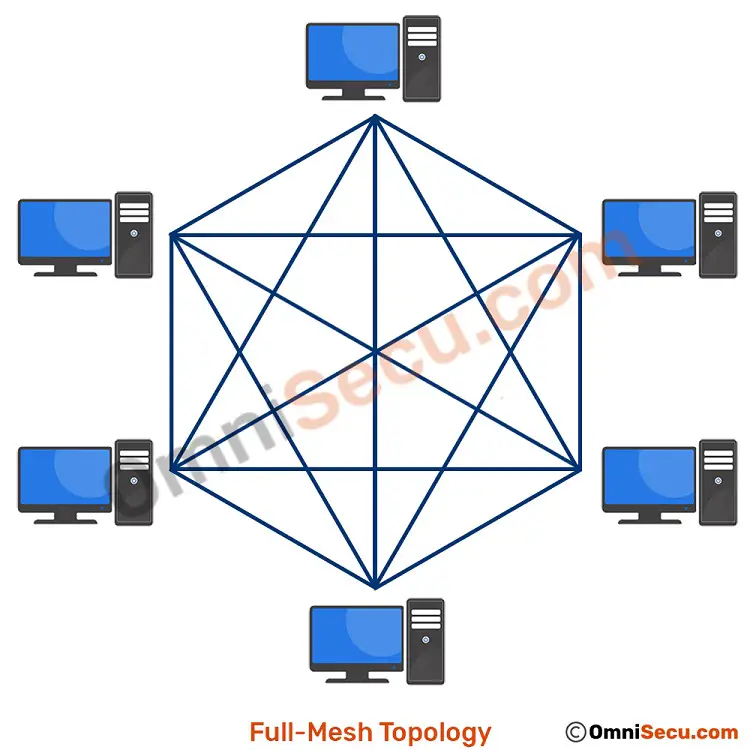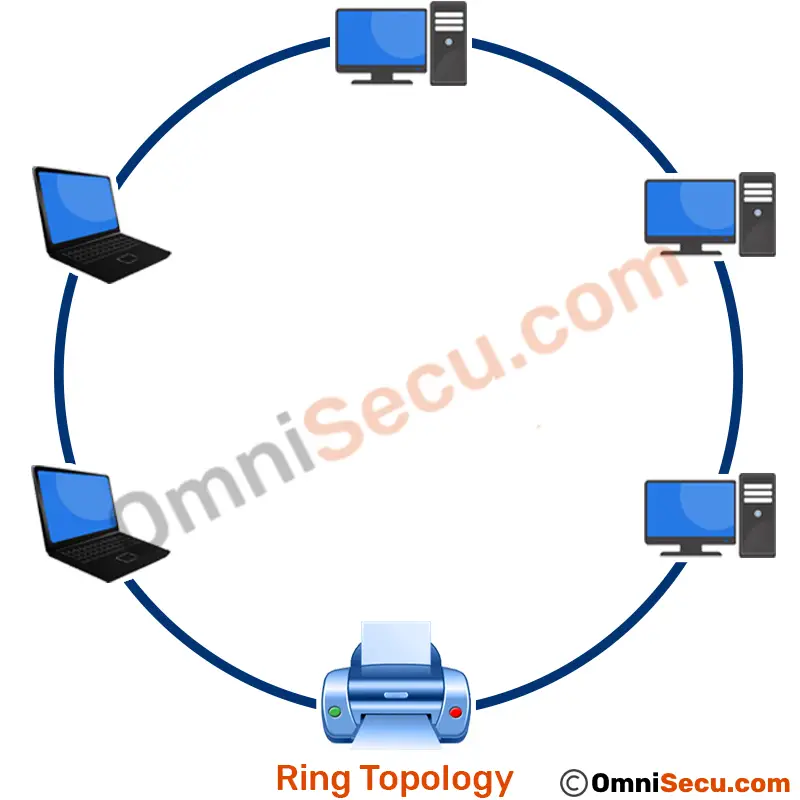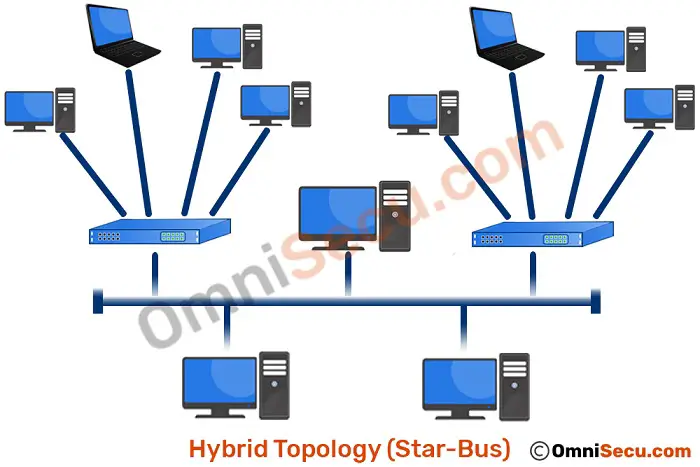What are Full-Mesh, Ring and Hybrid Toplogies, Advantages and Disadvantages of Full-Mesh, Ring and Hybrid Topologies
Full-Mesh Topology
In Full-Mesh topology, every network device is connected to other network devices. Full-Mesh topology is costly because of the extra cables needed and it is very complex and difficult to manage.
The main advantage of Full-Mesh topology is multiple paths to the destination computer. If one link is down, we have another path to reach the destination.
For LAN networking, Full-Mesh topology is not commonly used these days. Full-Mesh topology is used for site-to-site WAN connectivity, to increase redundancy. Full mesh topology is also used to provide redundancy for switches at core layer and distribution layer.

Ring Topology
In a ring topology, all computers are connected via a cable that loops in a ring or circle. A ring topology is a circle that has no start and no end and terminators are not necessary in a ring topology. Signals travel in one direction on a ring while they pass from one computer to the next, with each computer regenerating the signal so that it may travel the distance required.
The main advantage of Ring topology is that the signal degeneration is low since each workstation participating in the network is responsible for regenerating the weak signal. The disadvantage of ring topology is, if one workstation fails, the entire network will fail.

Hybrid Topology
Hybrid topology is a mixture of different topologies. Example is star-bus topology.
